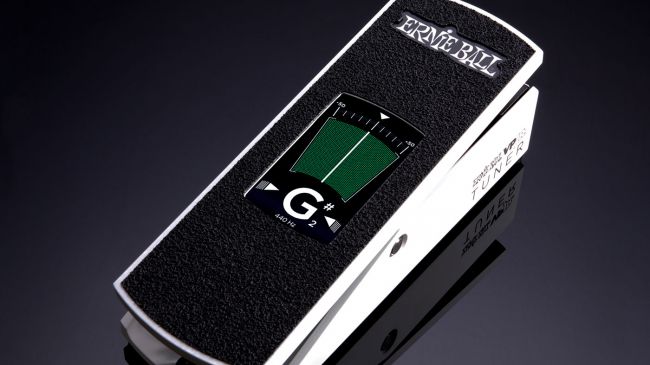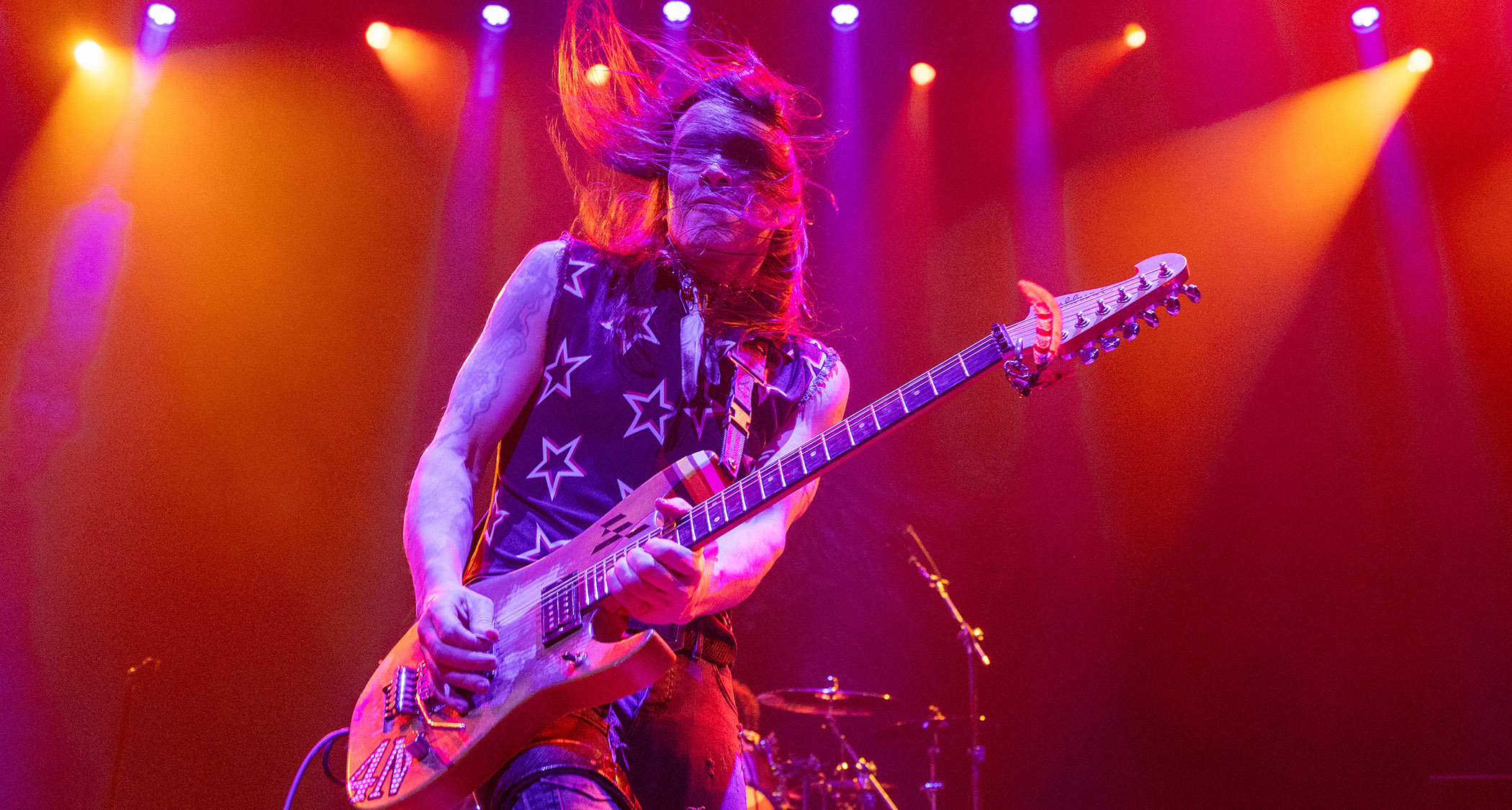Inside the VPJR Tuner, Ernie Ball’s new 2-in-1 volume and tuner pedal
Learn more about this handy new pedal from Ernie Ball

First announced at last year's NAMM show, the Ernie Ball VPJR Tuner pedal was one of those pedals that immediately became a must-have.
Merging the company's already terrific volume pedal with an ultra-accurate tuner and a fantastic graphic display, it's both stylish and - pretty much a given since it's from Ernie Ball - incredibly useful.
Ernie Ball recently put together a neat guide to the VPJR Tuner, in which the company gave more details on the pedal, and answered some questions from users.
Specs
The pedal's screen is designed to be ultra-robust, and even has an additional tempered glass screen protector that can be easily replaced in case of accidental damage. Unsurprisingly, if something comes into hard, direct contact with the screen it can break, but otherwise, the screen is about as sturdy as it gets.
The pedal's shape allows it to operate as both a volume pedal and a digital tuner - the first product to ever offer both functions in a single package. Do keep in mind though that - despite the shape - the pedal is not a wah or an expression pedal.
The pedal can handle all of the notes on a 24 fret guitar or 5-string bass in standard tuning, and more. If you really want to get in the weeds, it goes from A0 to Bb6 (27.5Hz to 1864.66Hz).
The tuner is accurate to within 0.1 cent. The visual in-tune display compensates when a new note transition is detected to account for the initial stretch of the string when the note is plucked. This means that, depending on how you play, the tuner will compensate to ensure the user's experience is accurate and effective.
Users can also change the reference pitch by double-tapping anywhere on the lower half of the touchscreen when the tuner is displayed and the screen is unlocked. This will display the reference pitch menu. Single tapping any of the frequencies shown will change the reference pitch of the tuner. The reference pitch ranges from 432 Hz to 447 Hz.
Although the piezo elements used in other, clip-on tuners are very accurate, none can match an instrument plugged directly into the VPJR Tuner.
Clip-ons can change the resonant frequency of users' guitars because it's physically clipped to their instruments, and their results are also based on a lot of mechanics that may or may not fail when users are moving around with their instruments, such as how they're holding the guitar.
The VPJR Tuner pedal can be used on both passive and active instruments, and requires a minimum of 150 milliamps with 9V to 18V DC capabilities. A power supply is not included.
If you're curious about how to use the pedal itself, check out the informative video below.
All the latest guitar news, interviews, lessons, reviews, deals and more, direct to your inbox!
Jackson is an Associate Editor at GuitarWorld.com. He’s been writing and editing stories about new gear, technique and guitar-driven music both old and new since 2014, and has also written extensively on the same topics for Guitar Player. Elsewhere, his album reviews and essays have appeared in Louder and Unrecorded. Though open to music of all kinds, his greatest love has always been indie, and everything that falls under its massive umbrella. To that end, you can find him on Twitter crowing about whatever great new guitar band you need to drop everything to hear right now.

